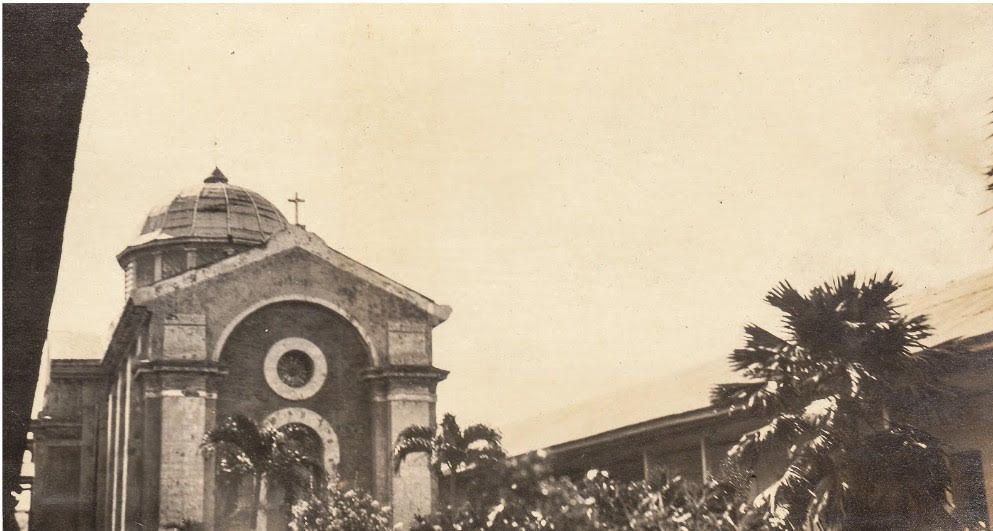Are we going mad?
Some contemplative thoughts on the recent observance of World Mental Health Day
At A Glance
- The Department of Health has disclosed that 3.6 million Filipinos experience mental health issues like 'insomnia and depression, substance use disorders, and mood disorders.'

A couple of days ago, we celebrated World Mental Health Day. In 2019, as records show, 970 million people around the world were living with some form of mental illness. This number increased significantly during the Covid-19 pandemic and local mental health professionals have been addressing mental health issues as they see this rise in cases closer to home.
The Department of Health has disclosed that 3.6 million Filipinos experience mental health issues like “insomnia and depression, substance use disorders like alcohol use disorder, and mood disorders like bipolar disorder.” Statistics show that 87 percent of professionals in the Philippines reported experiencing work-related mental health issues.
The youth have not been spared. In a 2023 Department of Education study, one out of five Filipino students were seen to experience mental health concerns like anxiety and depression. Despite the Philippine Mental Health Law being passed in 2018, more still needs to be done to provide mental health support to every Filipino in terms of government programs that can expand community knowledge and support living with mental health concerns.
At the recently held Mental Health Awareness Conference, I delivered the keynote address on behalf of my cousin Senator Imee Romualdez Marcos. One of the upsides to standing in for my cousin (along with seeing the Philippines, meeting new people, and honing my sewing skills to create outfits for these events, etc.) is learning about sectoral issues that affect and influence government policy and programs. I learned that the Philippines was among the last few countries in the world without legislation supporting mental health. It is indeed no joking matter, as my cousin Senator Imee underscored because mental health, she says, affects everyone—It doesn’t choose based on psychographic or demographic profiles.
Given the high number of professionals in the Philippines reporting work-related issues, there is Senate Bill No 1724 still pending in the committee, which will incentivize employers who implement programs and policies regarding the welfare and health of their employees. “Prioritizing mental health reduces absenteeism and contributes to a more motivated workforce, which benefits both employer and employee,” says Imee. Another bill (no. 1787), the eHealth Systems and Services Act, has been submitted to the Senate. This establishes an additional national healthcare system in the country. What it does is it gives better access to mental health care services online.
The evolution of addressing mental health issues in the Philippines has come a long way from pre-colonial times when “psychiatric maladies” were believed to be a result of “natural or supernatural occurrences.” In his article, “The Evolution of Psychiatry and Mental Health in the Philippines,” Dr. Rene M. Samaniego walks us through what he calls the historical narratives of the four periods of Philippine psychiatry under pre-Spanish and Spanish era, the American regime, the Japanese occupation, and the American liberation.
According to Samaniego, the diagnosis of people living with mental illness during the Spanish period wasn’t any better. “Aberrant thinking and behavior were attributed to religious factors and supernatural forces,” he wrote, illustrating that a person having a mental illness was “thought to have offended or displeased deities or witches/mangkukulam.” Treatment was either by the church or an herbolario or folk healer, involving a series of ritual processes. Nevertheless, it was during Spanish times that the very first institution for the treatment of the mentally ill was built at the turn of the 19th century, the Hospicio de San Jose, a Roman Catholic social welfare institution built in 1782. From the mentally ill, the Hospicia began taking orphans then elderly and special needs individuals.
Samaniego writes, that during the American regime (1898- 1946) mental illness was slowly being recognized as a medical illness, and treatment of the mentally ill became more humane. The Insane Department of San Lazaro Hospital under the American colonial government’s Bureau of Health was established in 1904, headed by the first Filipino psychiatrist Elias Domingo. Other psychiatric institutions followed—The City Sanitarium in San Juan del Monte (est. 1918) and the Insular Psychopathic Hospital later to be known as the National Psychopathic Hospital (est. 1928).

During the Japanese occupation, family members of mentally ill patients were taken home by their respective families. Those patients who remained in institutions were subjected to substandard treatment by the Japanese Imperial Army.
At the end of Liberation, the treatment of mental illnesses saw a resurgence, as increased awareness of the treatment to “cure” patients was highlighted due to their number rising from the “emotional impressions brought about by the casualties of the war.” In 1946, the National Psychopathic Hospital became the National Mental Hospital. That same year, the Victoriano Luna General Hospital established a neuropsychiatric unit that could accommodate 100 beds. More and more doctors went abroad to study. They would come back to head various newly established departments at hospitals in the Philippines.
In 1949, the Philippine Mental Health Association (PMHA) was established, borne out of the need for the private sector to step in to address the growing gap “between the country’s mental health needs,” according to Samaniego, “and the excessive burden of our existing local mental institutions.”
PMHA’s mandate is to promote mental health activities in the country and provide clinical services and public education. As Samaniego pointed out, other organizations and association dealing with mental health issues and its practitioners were established, but by the mid-1980s, the issue of “long-standing apathy toward mental illness was acknowledged. And despite the years mental health advocates and professionals have worked very hard to rid society of this misperception.”
“Our mental health is an important aspect of our being,” wrote Sen. Imee in her speech. It is critical to our overall wellbeing, affecting how we think, feel, and interact with one another. It is therefore important to take care of our minds, just as we take care of our bodies.”
At the Mental Health Awareness Conference, participants dove into workshops, activities, and discussions with the aim of sharing “the most innovative and effective approaches to supporting young adults’ wellbeing.” Participants from all across the country also hope to normalize the need for mental health support, not only in the workplace and the community, but especially on campuses. Mental health professionals agree open discussions on mental health should be encouraged and seeking help is a sign of strength, not weakness. It is ok and normal to seek support.